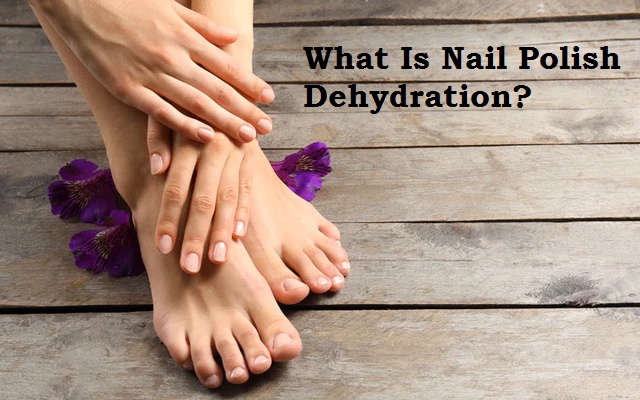Toenail damage from nail polish occurs when the toenails are exposed to harsh chemicals and environmental factors that strip the nails of their natural oils and moisture, leading to dryness and brittleness. Learn how to treat dehydrated toenails by limiting the use of harsh chemicals, giving your nails a break from polish, protecting your nails from environmental factors, eating a balanced diet, and using moisturizers. If your nails continue to be dehydrated and brittle, it's important to see a podiatrist to rule out underlying medical conditions. Possible causes and solutions to nail polish dehydration:
- Nail polish removers contain harsh chemicals, such as acetone, that strip the nails of their natural oils and moisture causing ugly nails after removing polish. To prevent dehydration, use acetone-free nail polish remover or limit the use of nail polish remover.
- Frequent use of nail polishcan dehydrate the nails. To prevent this, give your nails a break from polish and allow them to breathe for a few days every week.
- Environmental factors such as exposure to cold, dry air, and excessive washing can contribute to nail polish dehydration.
- Nutritional deficiencies, such as a lack of vitamins and minerals, can contribute to nail polish dehydration. To keep your toenails healthy, eat a balanced diet rich in nutrients that support nail health, such as biotin, vitamin E, and iron.
- Moisturizing your toenails regularly can help prevent nail polish dehydration. Apply a nourishing nail oil or cream to your nails and cuticles to help retain moisture and prevent dryness.
If you are experiencing dehydrated toenails speak to a podiatrist to determine the underlying cause and receive proper treatment. Depending on the underlying condition, treatment may include medications, dietary changes, or lifestyle modifications.Medical conditions that can cause dehydrated toenailsinclude:
- Fungal infectionsare a common cause of dehydrated toenails causing the nails to become thickened, discolored, and brittle.
- Psoriasis is a skin condition that can affect the nails to become dry, brittle, and prone to cracking.
- Thyroid disorders can cause dry and brittle nails.
- Raynaud's disease affects blood flow to the extremities, such as the toes causing the toenails to become dry and brittle.
- Eczema causes dry, itchy patches on the skin around the nails.
- Nutritional deficiencies, such as a lack of biotin, iron, or vitamin D, can cause dehydrated toenails.
Signs of Dehydrated Nail Polish
If you are experiencing one or more of these symptoms, take steps to hydrate your toenails. Moisturize your toenails and cuticles regularly with a nourishing oil or cream, and drink plenty of water to stay hydrated. If they persist, consult with a podiatristto receive proper treatment.Signs that you have dehydrated nails:
- Brittle nailsare prone to cracking or breaking.
- Discoloration of the toenails to a yellow or white color.
- Dehydrated nails can feel rough or uneven to the touch.
- Splitting or peeling, especially at the tips.
- Dehydrated nails lack flexibility and can feel rigid.
- Slow nail growth: Dehydrated nails may grow slower than usual, or they may not grow at all.
- Dehydrated nails lack the natural shine that healthy nails have.
Ugly nails after removing polishissues can be very uncomfortable to live with. For any toenail concerns contact the podiatrist Houston at DeNiel Foot & Ankle Center for keeping your feet pain-free.


No comments yet